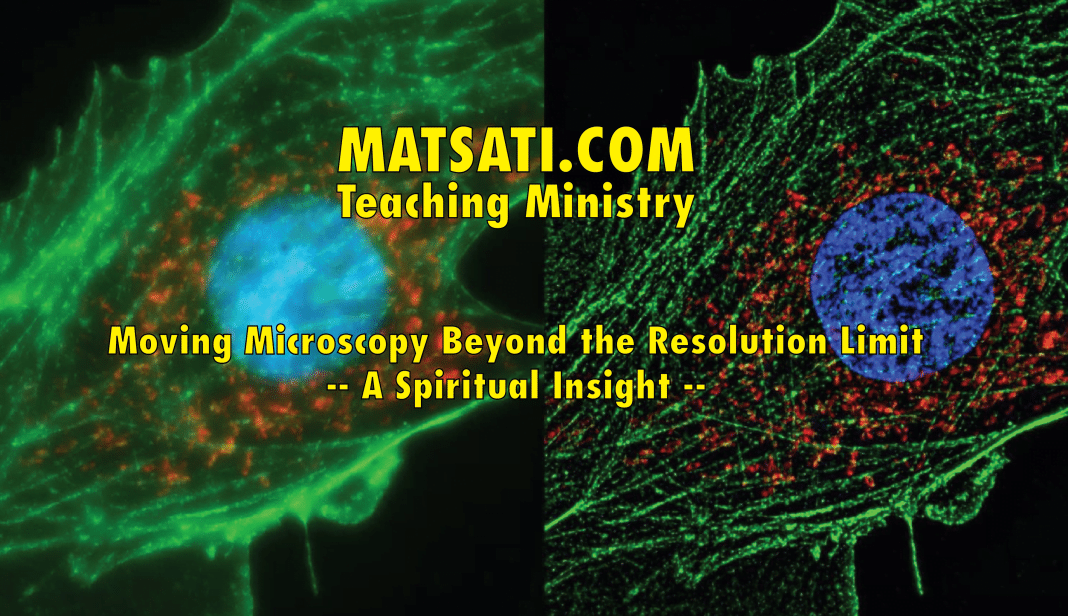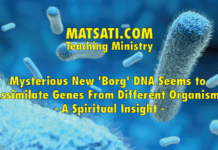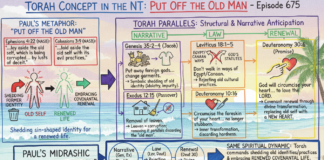A recently published paper in the Journal Optica [1] a Polish-Israeli team from the Faculty of Physics of the University of Warsaw and the Weizmann Institute of Science have reported a new method of microscopy. The paper presents a method of fluorescent microscopy that in theory has no resolution limit. The researchers demonstrated a fourfold improvement in resolution over the diffraction limit.
Reference
- Aleksandra Sroda et al, “SOFISM: Super-resolution optical fluctuation image scanning microscopy,” Optica (2020). DOI: 10.1364/OPTICA.399600
The first question we might have is what is a resolution limit? This is something that is called the Rayleigh Criterion. Light diffracts as it moves through space, bending around obstacles, interfering constructively or destructively. If we consider a diffraction grating, this device disperses light according to its wavelength. For example, when we pass a light through a small circular aperture, instead of getting a sharp bright spot, we get a spot with a fuzzy edge surrounded by circles of light with varying intensity. This spectral pattern is caused by diffraction where the light from the different parts of the aperture (circular aperture) interferes constructively and destructively. This effect is most noticeable when the aperture is small. There are many situations in which diffraction limits the resolution. For example, our vision is limited because light passes through the pupil, which is also considered a circular aperture of our eye. The diffraction spreading of light is due to the limit on the diameter of the light beam, not the interaction with the aperture. Therefore, the light passing through an aperture of a particular diameter shows this effect and spreads causing blurring of the image. Telescopes are also limited by diffraction because of the finite diameter of the primary mirror. The Rayleigh criterion for the diffraction limit to resolution states that two images are just resolvable when the center of the diffraction pattern of one is directly over the first minimum of the diffraction pattern of the other. Diffraction is not just a problem for optical instrumentation, it is also a problem for electromagnetic radiation too. Any beam of light having a finite diameter and wavelength exhibits diffraction spreading.
The biological sciences require the ability to visualize smaller and smaller details in the objects that are under investigation. Scientists need to see the structure and mutual relationships between proteins and cells for example. The analytical tool for visualization can not alter the structure or biological mechanism. Due to the wavelike nature of light, an optical microscope does not allow imaging samples smaller than 250 nanometers. This means that objects closer to each other on the order of half the wavelength of light (~ 250 nm) can not be discerned. This is due to the diffraction limit in visualizing biological structures. The electron microscope allows for many orders of magnitude smaller objects to be observed, however the sample can not be in a living organism, the reason being, the samples are pumped to a vacuum when the analysis is made. This is where the fluorescence microscopy technique comes into the picture. The field of super-resolution fluorescence microscopy won two Nobel Prizes in 2008 and 2014 for this technique. There are several fluorescence microscopy techniques available, PALM (Photo-activated localization microscopy) and STORM (stochastic optical reconstruction microscopy) or STED (Stimulated emission depletion) microscopy are known as ultra-high resolution techniques allowing the visualization of objects which are only a few nanometers apart from one another. These techniques however require long exposure times and a very complex preparation time for the samples. Other methods such as SIM (Structured Illumination Microscopy) or ISM (image scanning microscope) are easier to use but offer much lower resolution.
The publication [1] introduces a new technique for super-resolution microscopy which is called super-resolution optical fluctuation image scanning microscopy (SOFISM). SOFISM utilizes the naturally occurring fluctuations in emission intensity of fluorescent markers to further enhance the spatial resolution of an image scanning microscope (ISM). This new technique (SOFISM) correlates the intensities detected by multiple detectors. In principle, the measurement of the nth order correlation can lead to a factor of 2n resolution improvement with respect to the diffraction limit. In practice, the resolution achievable for higher order correlations is limited by the signal to noise ratio of the measurements. Currently, this new technique (SOFISM) only requires a slight modification to the existing and widely used confocal microscope. One would replace the photomultiplier tube with a single-photon avalanche diode (SPAD) array detector. In addition, it is necessary to slightly increase the measurement time and change the data processing procedure. The SPAD detectors have recently significantly reduced in price and manufacturing which enables this existing technology to be retrofitted (updated) and allow for much higher resolution spectroscopy with the existing equipment.
The Spiritual Insight that we receive from this type of research is related to the method of fluorescent microscopy that in theory has no resolution limit and which has demonstrated a fourfold improvement in resolution over the diffraction limit in this optical technique. This reminds us of the minutiae of Scripture, which refers to “a minute or minor detail” and something that Yeshua spoke of in regards to the Torah. This also reminds us of the minutiae of sin in our lives and the weighiness thereof. These things reminds us of what Yeshua said according to Matthew 5:17-18.
Matthew 5:17-20
5:17 ‘Do not think that I came to abolish the Law or the Prophets; I did not come to abolish but to fulfill. 5:18 ‘For truly I say to you, until heaven and earth pass away, not the smallest letter or stroke shall pass from the Law until all is accomplished. 5:19 ‘Whoever then annuls one of the least of these commandments, and teaches others to do the same, shall be called least in the kingdom of heaven; but whoever keeps and teaches them, he shall be called great in the kingdom of heaven. 5:20 ‘For I say to you that unless your righteousness surpasses that of the scribes and Pharisees, you will not enter the kingdom of heaven. (NASB)
Here, Yeshua says that he did not come to abolish the Torah or the Prophets. He also teaches us that not the smallest letter or stoke shall pass from the Torah until all is accomplished (Matthew 5:18). Yeshua is speaking to us here about the Minutiae of the Word of God. The present scientific research tends to draw these things out. The biological sciences require the ability to visualize smaller and smaller objects. Scientists need to see the structure and the mutual relationships between proteins and cells for example. Due to the wavelike nature of light, and the constructive and destructive interferences, an optical microscope does not allow imaging samples smaller than 250 nanometers. As a result, new methods need to be developed as are being described in this paper [1] which help to increase the resolution limit significantly. This parallels the scriptures as Yeshua said the minutiae of the Scriptures are also just as important to us as is the bigger picture. We have to dig however in order to understand the details. The idea of looking for the greater details can be illustrated from the biblical text according to Bereshit / Genesis 2:15-25.
Bereshit / Genesis 2:15-25
15וַיִּקַּ֛ח יְהוָ֥ה אֱלֹהִ֖ים אֶת־הָֽאָדָ֑ם וַיַּנִּחֵ֣הוּ בְגַן־עֵ֔דֶן לְעָבְדָ֖הּ וּלְשָׁמְרָֽהּ׃ 16וַיְצַו֙ יְהוָ֣ה אֱלֹהִ֔ים עַל־הָֽאָדָ֖ם לֵאמֹ֑ר מִכֹּ֥ל עֵֽץ־הַגָּ֖ן אָכֹ֥ל תֹּאכֵֽל׃ 17וּמֵעֵ֗ץ הַדַּ֨עַת֙ ט֣וֹב וָרָ֔ע לֹ֥א תֹאכַ֖ל מִמֶּ֑נּוּ כִּ֗י בְּי֛וֹם אֲכָלְךָ֥ מִמֶּ֖נּוּ מ֥וֹת תָּמֽוּת׃ 18וַיֹּ֨אמֶר֙ יְהוָ֣ה אֱלֹהִ֔ים לֹא־ט֛וֹב הֱי֥וֹת הָֽאָדָ֖ם לְבַדּ֑וֹ אֶֽעֱשֶׂהּ־לּ֥וֹ עֵ֖זֶר כְּנֶגְדּֽוֹ׃ 19וַיִּצֶר֩ יְהוָ֨ה אֱלֹהִ֜ים מִן־הָֽאֲדָמָ֗ה כָּל־חַיַּ֤ת הַשָּׂדֶה֙ וְאֵת֙ כָּל־ע֣וֹף הַשָּׁמַ֔יִם וַיָּבֵא֙ אֶל־הָ֣אָדָ֔ם לִרְא֖וֹת מַה־יִּקְרָא־ל֑וֹ וְכֹל֩ אֲשֶׁ֨ר יִקְרָא־ל֧וֹ הָֽאָדָ֛ם נֶ֥פֶשׁ חַיָּ֖ה ה֥וּא שְׁמֽוֹ׃ 20וַיִּקְרָ֨א הָֽאָדָ֜ם שֵׁמ֗וֹת לְכָל־הַבְּהֵמָה֙ וּלְע֣וֹף הַשָּׁמַ֔יִם וּלְכֹ֖ל חַיַּ֣ת הַשָּׂדֶ֑ה וּלְאָדָ֕ם לֹֽא־מָצָ֥א עֵ֖זֶר כְּנֶגְדּֽוֹ׃ 21וַיַּפֵּל֩ יְהוָ֨ה אֱלֹהִ֧ים ׀ תַּרְדֵּמָ֛ה עַל־הָאָדָ֖ם וַיִּישָׁ֑ן וַיִּקַּ֗ח אַחַת֙ מִצַּלְעֹתָ֔יו וַיִּסְגֹּ֥ר בָּשָׂ֖ר תַּחְתֶּֽנָּה׃ 22וַיִּבֶן֩ יְהוָ֨ה אֱלֹהִ֧ים ׀ אֶֽת־הַצֵּלָ֛ע אֲשֶׁר־לָקַ֥ח מִן־הָֽאָדָ֖ם לְאִשָּׁ֑ה וַיְבִאֶ֖הָ אֶל־הָֽאָדָֽם׃ 23וַיֹּאמֶר֮ הָֽאָדָם֒ זֹ֣את הַפַּ֗עַם עֶ֚צֶם מֵֽעֲצָמַ֔י וּבָשָׂ֖ר מִבְּשָׂרִ֑י לְזֹאת֙ יִקָּרֵ֣א אִשָּׁ֔ה כִּ֥י מֵאִ֖ישׁ לֻֽקֳחָה־זֹּֽאת׃ 24עַל־כֵּן֙ יַֽעֲזָב־אִ֔ישׁ אֶת־אָבִ֖יו וְאֶת־אִמּ֑וֹ וְדָבַ֣ק בְּאִשְׁתּ֔וֹ וְהָי֖וּ לְבָשָׂ֥ר אֶחָֽד׃ 25וַיִּֽהְי֤וּ שְׁנֵיהֶם֙ עֲרוּמִּ֔ים הָֽאָדָ֖ם וְאִשְׁתּ֑וֹ וְלֹ֖א יִתְבֹּשָֽׁשׁוּ׃
2:15 Then the Lord God took the man and put him into the garden of Eden to cultivate it and keep it. 2:16 The Lord God commanded the man, saying, ‘From any tree of the garden you may eat freely; 2:17 but from the tree of the knowledge of good and evil you shall not eat, for in the day that you eat from it you will surely die.’ 2:18 Then the Lord God said, ‘It is not good for the man to be alone; I will make him a helper suitable for him.’ 2:19 Out of the ground the Lord God formed every beast of the field and every bird of the sky, and brought them to the man to see what he would call them; and whatever the man called a living creature, that was its name. 2:20 The man gave names to all the cattle, and to the birds of the sky, and to every beast of the field, but for Adam there was not found a helper suitable for him. 2:21 So the Lord God caused a deep sleep to fall upon the man, and he slept; then He took one of his ribs and closed up the flesh at that place. 2:22 The Lord God fashioned into a woman the rib which He had taken from the man, and brought her to the man. 2:23 The man said, ‘This is now bone of my bones, And flesh of my flesh; She shall be called Woman, Because she was taken out of Man.’ 2:24 For this reason a man shall leave his father and his mother, and be joined to his wife; and they shall become one flesh. 2:25 And the man and his wife were both naked and were not ashamed. (NASB)
Based upon the narrative here, what was the first thing that God had Adam do? He had him involved in the act of creation. The Lord God put Adam in the garden and then brought the animals to him to see what he would call them. Adam created names for each of the animals. (2:19-20) As the man saw and named all of the creatures, he was lonely, and so the Lord said that it was not good for man to be alone, so he took from Adam’s side his rib and formed it into the woman.
There are a few things we can observe from this text and the subsequent chapters. Some questions that are presented to us based on Bereshit / Genesis 2-3 are “Does God know the past, present, and the future?” If the Lord does know the past, present, and future, “why did he put the tree of the knowledge of Good and evil in the midst of the garden knowing that Adam and Eve would sin?” And, “why did the Lord God command Adam not to eat from the tree of the knowledge of Good and evil?” If we think about these questions for a moment, there is a reason the Lord put the tree in the midst of the garden and why he commanded Adam not to eat from the tree. This is related to how we were created, in His image, having the ability to create. Obeying God’s Word is an act of creation on an individual basis in our lives. And similarly, disobeying God’s Word is also an act of creation in our lives. Because of this unique ability that God gave us, we need boundaries. We need to know what is good and what is bad behavior. The obedience to the commands of God is an act of creation in and of itself. We are doing something new in our lives in the sense that we are causing ourselves to do what is right in the midst of a wicked work. As the children of God we must choose to do this every day of our lives. All of us, no matter who we are, are involved in the intentional act of creation by fulfilling a command because we are created in God’s image. This is why Paul wrote what he did according to Ephesians 2:10:
Ephesians 2:10
שֶׁהֲרֵי מַעֲשֵׂה יְדֵי אֱלֹהִים אֲנַחְנוּ, בְּרוּאִים בַּמָּשִׁיחַ יֵשׁוּעַ לְמַעֲשִׂים טוֹבִים אֲשֶׁר אֱלֹהִים הֵכִינָם מִקֶּדֶם לְמַעַן נִחְיֶה בָּהֶם.
2:10 For we are His workmanship, created in Christ Jesus for good works, which God prepared beforehand so that we would walk in them. (NASB)
Here Paul wrote that we were created in the Messiah לְמַעֲשִׂים טוֹבִים “For good works.” This implies that we are to know the difference between good and evil. The Lord gave us His commands such that we have boundaries in our lives. This is why parents make rules for their children. Now when we study the narrative of the creation account in Bereshit / Genesis 2:16-17 that God commanded Adam before Eve was created. So when Eve ate from the tree of the knowledge of good and evil, did she know she was not supposed to? The way Eve responded to the serpent, it appears that she did know.
Bereshit / Genesis 3:1-3
3:1 Now the serpent was more crafty than any beast of the field which the Lord God had made. And he said to the woman, ‘Indeed, has God said, ‘You shall not eat from any tree of the garden’?’ 3:2 The woman said to the serpent, ‘From the fruit of the trees of the garden we may eat; 3:3 but from the fruit of the tree which is in the middle of the garden, God has said, ‘You shall not eat from it or touch it, or you will die.’‘ (NASB)
According to Bereshit / Genesis 3:2-3 Eve answered exactly as God had commanded Adam in Bereshit / Genesis 2:16-17. The question presented to us is “who told her about the command if she had been created after God had commanded Adam?” Remember, we only see God commanding Adam. Obviously it was Adam that told her about the command, possibly when he was showing her the garden. Now another good question is “If Eve had not known about the command, would she have been guilty of sin?” I believe this is a very good question because I have heard many people argue that those who were not given the chance for hearing the gospel message, are not going to be sent to hell because being ignorant will change the standard of justice. The Torah however tells us the following concerning this approach of using ignorance as an excuse.
Vayikra / Leviticus 5:17
יז וְאִם-נֶפֶשׁ כִּי תֶחֱטָא וְעָשְֹתָה אַחַת מִכָּל-מִצְוֹת יְהֹוָה אֲשֶׁר לֹא תֵעָשֶֹינָה וְלֹא-יָדַע וְאָשֵׁם וְנָשָֹא עֲוֹנוֹ:
5:17 ‘Now if a person sins and does any of the things which the Lord has commanded not to be done, though he was unaware, still he is guilty and shall bear his punishment. (NASB)
Here we read the text states וְאִם-נֶפֶשׁ כִּי תֶחֱטָא “if a soul sins” וְעָשְֹתָה אַחַת מִכָּל-מִצְוֹת יְהֹוָה אֲשֶׁר לֹא תֵעָשֶֹינָה “and does one from all that the Lord commands not to be done” וְלֹא-יָדַע “and does not know” וְאָשֵׁם וְנָשָֹא עֲוֹנוֹ “he is guilty and will bear his iniquity.” This verse speaks of being ignorant of the command, not knowing what God has said we should not do, and how even though we do not know we are still guilty and will bear our iniquity. Even though the Torah was written 1400 BC, that is 3420 years ago, we are still responsible to obey God’s Word. If Eve had not known about the command, she would have still been guilty for disobeying the command to not eat from the tree of the knowledge of good and evil. These things reveal to us how even though we do not know these things, we still have a responsibility before God as being created in His image to bring glory to His name. This is why the Lord God sent His Son Yeshua to lay his life down for ours, taking the punishment of sin in our place. We need Yeshua and what He did for us because we may not know in what ways we have violated God’s command in disobedience. As we get older in life, we may forget about our sins, or with time the weightiness of our sins tends to diminish. We don’t consider them to be so great or significant as time tends to cause them to be forgotten. We need Yeshua because of what he had done for us, and believing he did this, we can ask our Father in heaven to forgive us of our sins both past and present, and also for those sins we do not know about. The Spiritual Insight that we receive from this type of research is related to the method of fluorescent microscopy that in theory has no resolution limit and which has demonstrated a fourfold improvement in resolution over the diffraction limit in this optical technique. This reminds us of the minutiae of Scripture, which refers to “a minute or minor detail” and something that Yeshua spoke of in regards to the Torah. This also reminds us of the minutiae of our sins and the weightiness of sin in our lives. Many times we tend to neglect to also look at the minutiae of our lives in regards to sin. All the more reason why we need the Savior sent from God! There is a God who is altogether holy, who is perfectly just, and who declares that he is going to judge the world and hold every human being accountable for the way they have lived their lives. As a perfectly holy and just God, he requires from each one of us a life of perfect obedience and of perfect justness. The problem is our falling short, missing the mark, which is the definition of sin. The point is God is just and requires perfection and so He is going to deal with us according to justice. No one can escape from standing before God and giving an account or our lives. Many people in today’s culture don’t really believe that God is going to hold them accountable for their lives or that God really will not require righteousness. When one takes that approach , he or she does not feel the weight of the threat of judgment. The scriptures say something quite different however, where ignorance is no excuse. Again, this is why we need a savior, Yeshua the Messiah. By our faith in him, we can have peace and life and a loving relationship with our Father God in Heaven.









